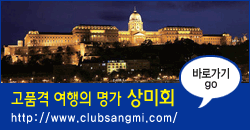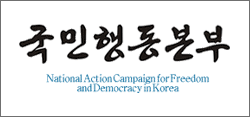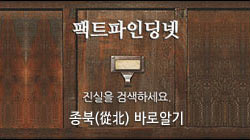(English version is below)
-여름마다 물바다가 됐던 한강에서 기적이-
겨울마다 한강(漢江)이 꽁꽁 얼어붙었다. 마음 놓고 썰매도 타고 자전거도 타고 또 뛰어놀았다. 얼음 낚시꾼도 많았다. 얼음 구멍이 여기저기 너무 많아서 특히 밤에는 조심조심 다녔다. 지금은 사라진 밤섬(당시 약 60가구, 철거 후 철새도래지로 지정)에 친구가 있었다. 우리는 자전거 한 대에 둘이 타고 오가기도 했다. 지프차가 건널 정도로 두껍게 꽁꽁 얼었다. (바이칼호수가 결빙되면 그 위를 트럭이 오가는 모습을 볼 땐 한강이 생각난다). 50~60년대 중반까지 내내 그랬다. 강물이 하도 맑고 깨끗해서 여름이면 수영하다 물을 마셔도 아무 탈이 없었다. 기억으로는 이런 현상이 제2 한강교가 개통된 1965년부터 몇 년 더 계속된 것 같다. 겨울이면 얼음판이 되어주고, 여름이면 수영장이 되어준 한강은 정말 재미있는 놀이터였다.
그러나 매년 반복되던 한강의 홍수(洪水)는 끔찍했다. 제방(堤防)이 없던 시절의 물난리는 최악의 재앙이었다. 마치 하늘의 신(神)이 복수라도 하듯 흙탕물로 모든 것을 집어삼켰다. 노아(Noah)와 방주(方舟)가 절실했다. 초가집과 돼지 하물며 소도 떠내려왔다. 마포 전차 종점(終點)은 물론 신촌 굴다리(옛 강화버스 종접)까지 물이 찼다(그야말로 물바다다. 이와 같은 장면을 미얀마의 이라와디강과 인도 바라나시의 갠지스강에서 본 적 있다). 내가 일하던 공장 건물은 2층이었는데 아래층은 완전히 잠겼다. 물이 빠지고 복구하는데 보통 일주일 이상 걸렸다. 상습침수(常習侵水) 지역의 가옥(家屋) 피해 역시 막대(莫大)했다. 물 빠진 후 햇볕에 말리기 위해 집 앞에 내놓은 고만고만한 가구와 생활용품 등 진풍경(珍風景)이 따로 없었다.
다행히 신(神)이 노여움을 푼 걸까. 어느 해 갑자기 매년 반복되던 끔찍한 대홍수는 멈췄다. 의인(義人) 노아가 나타나고 방주가 등장한 것이다. 박정희 대통령과 김현옥 서울시장 그리고 여의도의 방죽(윤중제)과 한강 양변(兩邊)의 긴 제방이었다. 진짜 한강의 기적이 시작된 것이다. (참고: 오늘날 한강 양변의 제방에는 50여 개의 나들목(토끼굴)이 있다. 이곳에 나바론 요새를 방불케 하는 철제 육갑문들이 거의 완벽하게 설치돼 있다. 한강 물 범람 걱정 뚝).
바로 일 년 전(1966), 미국 존슨 대통령이 방한했다. 한강의 기적과 무관치 않다. 암튼, 박정희 대통령과 존슨 대통령은 김포공항에서 청와대로 가던 중 신촌 로터리에서 하차했다. 로터리를 반 바퀴 돌며 손을 들어 환영 인파에 답례(答禮)했다. 이때 나는 운 좋게도 가장 가까운 거리(5m)에서 특히 박정희 대통령을 눈여겨볼 수 있었다. 눈동자에 빛이 났다.
소수(小數) 부잣집을 제외한 가정집엔 수돗물이 없었다. 동네 가운데 파놓은 공동(共同) 우물물을 두레박으로 퍼 올려 마셨다. 500여 미터 거리에 설치해놓은 공동 수도가 있었지만, 이용자(利用者)는 거의 없었다. 유료(有料)였기 때문이다. 가끔은 수도공사가 아직 안된 부잣집에 수돗물을 길어주고(양 어깨에 물통 짐) 돈을 받기도 했다. 그땐 흔한 풍경이었지만 나도 엄마와 함께, 다른 집처럼, 빨랫감을 모아 엄마는 이고 나는 둘러메고 한강에 가서(3km) 빨래해 왔다. 아직도 인도 파키스탄과 우간다 등 내가 다녀 본 많은 나라는 불결한 우물물을 마시고 있다.
당시 서울시 분뇨(糞尿) 처리장은 마포 신수동에 있었다(일명 똥통머리). 그 위치를 말하면 “설마”라고 하겠지만 사실이다. 신촌 로터리에서 불과 2km 정도 떨어진 곳이다. 위치는 마포 서강의 와우산(臥牛山)에서 남산 쪽으로 보면 약 2km 앞 언덕 위에 현재의 광성중-고등학교가 보인다. 그 학교와 와우산 사이에 약 700m쯤에 완만한 구릉지가 있었다. 대부분 채소밭. 그 비스듬한 경사지에 약 50cm 깊이와 1m 넓이의 구덩이를 10m 간격을 두고 아래로 (계단식)으로 20여 개 파놓았다. 그곳에 분뇨차들이 와서 분뇨를 쏟아놓는다. 건조되면 인부들이 걷어낸 뒤 또 사용하는 순환식이었다. 악취는 당연했다. 4km 거리에 있던 당인리 발전소에서는 연일 회색 연기를 뿜어냈다. 어떤 날은 풍향(風向)에 따라, 온 동네가 코를 막았고 빨래를 걷어 들였다. 그렇다고 오늘날처럼 툭하면 불평하고 항의하고 고발하는 일은 없었다. 오늘날 생각해보면 마치 먼 옛날의 농경시대 얘기 같다. 불과 50~60년 전의 이야기인데….
그러나 이러한 열악(劣惡)한 환경은 근대화의 진척(進陟)에 따라 빠른 속도로 개선되거나 사라졌다. 성공한 大韓民國이 아니었다면 우리는 지금도 지구촌 곳곳에서 물 부족, 식량부족, 의약품 부족 등으로 고통받는 사람들과 별반 차이가 없을 것이다, 자랑스러운 大韓民國이 아닐 수 없다. 실제로 아직 물(식량, 의약품)과 생필품(生必品)이 부족한 곳을 많이 봤기 때문이다. 특히 짐바브웨 잠비아 말라위 페루 등이 그랬다. 도심에서 조금만 벗어나면 완전히 다른 모습이다. 당시 이들에게 볼펜 한 자루는 아주 큰 선물이었다 (3다스를 가져간 적도 있음). 볼펜 한 자루에 행복해하는 아이들 모습은 내 어릴 때의 모습을 다시 보는 데자뷔 현상을 낳기도 했다.
당시에도 부흥주택(復興住宅)이라 하여 소수(小數)의 부자들이 사는 제대로 된 집들은 있었다. 그 외 대부분은 시유지(市有地)에 무허가로 난립(亂立)한 판잣집, 양철집, 흙벽돌집, 루핑으로 지붕을 덮은 집들이었다. 당시 1인당 국민소득은 123달러에 불과했지만, 하루가 다르게 발전하는 서울로 전국에서 구직자들이 모여들었다. 잠잘 곳이 태부족이었다. 오죽했으면 판잣집에 세 들어 살기도 어려웠을까. 급조(急造)된 이런 열악한 상태의 무허가 집들은 태풍이 왔다 하면 지붕과 벽이 뜯겨나가거나 통째 날아가기 일쑤였다. 겨울엔 연탄가스 중독 사고가 비일비재(非一非再)했다. 언젠가, 조그만 무허가 배터리 제조 공장(가정집)에서 일할 때다. 나와 함께 실내에서 작업하던 친구가 갑자기 쓰러졌다. 나는 이 친구를 업고 1km 거리를 달려 병원에 도착했다. 원인은 연탄가스 중독. 문틈으로 가스가 스며든 것이다.
이처럼 여름마다 태풍 뒤엔 지붕이 날아가고 축대가 무너지고 흙벽돌집이 무너지는 사고들이 심심찮았다. 비 오면 천장(天障) 여기저기서 물이 줄줄 샜다. 양동이와 깡통은 필수품(必需品). 그래도 행복했던 기억만 남아 있다. 하물며 오늘날에야!! 언제든 수도꼭지만 틀면 찬물 더운물이 쏟아지고, 냉장고에는 먹고 마실 것이 떨어질 날이 없다. 그것도 귀찮아 전화 한 통이면 총알 배달 음식을 먹을 수 있는, 그야말로 꿈같은 세상을 살고 있는데…. 이 게 신기하고 고맙지 않으면 도대체 뭐가 신기한 건지 난 도통 모르겠다. 물론 풍요 속에 자란 세대는 그렇다 쳐도, 글쎄 보릿고개 세대는 다를 것 같은데, 정작 접해보면 그런 사람들이 드문 것도 사실인 것 같다.
당시 서울 경기도는 물론 전국(全國)의 명소(名所) 중 명소라면 종로구 와룡동 소재(所在)의 창경원(昌慶苑)을 들 수 있다. 특히 봄과 소풍 철엔 인산인해(人山人海)였다. 유일(唯一)한 동물원(動物園)이었기 때문이다. 서울 마포에 살고 있었음에도 부모(父母)님과 함께 온 가족이 함께 와 본 적이 없다. 1984년, 창경원은 오늘날의 과천 서울 대공원으로 옮겼다. 이곳에는 옛 창경원과는 비교할 수 없을 정도로 많은 희귀(稀貴)종류의 동물들과 식물들 그리고 최첨단 과학의 놀이 시설이 완비되어 있다. 완전 선진국형이다. 이 역시 내 어릴 땐 상상도 못 했던 꿈같은 세상이다.
이처럼 나라가 성공하면 모두가 그 혜택을 본다. 이에 해당하는 나라가 바로 大韓民國이다. 세계가 증명한다. 세계 제2차 대전 후 약 140개국이 독립을 했다. 그중 유일하게 大韓民國만이 자유와 풍요를 누리는 나라가 됐다. 강냉이가루로 만든 노란 빵과 쌀뜨물 맛의 분유로 배를 채우며 일하면서 배운 세대(世代)가 있었고, 위대한 지도자(이승만 대통령과 박정희 대통령)가 있었기에 가능했다. 이분들이 아니었으면 대부분의 나라처럼 평생 죽도록 일하고도 추위와 굶주림으로 생(生)을 마감하는 공산국가(共產國家)가 됐을 것이다.
반대로 나라가 가난하면 모두가 춥고 배고프다. 초췌(憔悴)해진다. 비루(悲淚)를 삼키며 비루(鄙陋)한 삶을 살게 된다. 그 한(恨)을 운명처럼 안고 살아야 한다. 이런 나라들을 수없이 직접 가서 보고 확인했다. 이처럼 양극단(陽極端)의 두 시대를 다 살아 보면서 느끼는 것은 하루하루가 매일 새롭고 신기하게 보인다는 것이다. - 4부 계속 -
감사합니다.
The most blessed story of my life (3)
The Han River froze over every winter. I had a lot of fun sledding and riding my bike here. There were also a lot of ice fisherman. I had to be cautious since there were so many ice holes here and there, especially at night. I had a good time riding my bike with my friends. The Han River was thickly frozen enough for a vehicle to cross. That was the case all the way through the 1950s and into the 1960s. The river's water was so pure and clean that I could drink it while swimming in the summer without getting sick. This phenomena appears to have continued for several years after the second Hangang Bridge opened in 1965, according to my recall. For me, the Han River, which turned into an ice sheet in winter and a swimming pool in summer, was a fantastic playground.
The annual flooding of the Han River, on the other hand, was horrible. Flooding was the biggest tragedy since there were no levees. As if the gods were retaliating, it engulfed everything with filthy water. The ark and Noah were desperately required. Thatch cottages, pigs, and cows drifted down the Han River. The Mapo streetcar station, as well as the area around the Sinchon rotary, were flooded. I saw this kind of scenes on the Irrawaddy River in Myanmar and the Ganges River in Varanasi, India. The factory where I worked was a two-story building. The basement was fully submerged. It normally took a week or more to recover after the water had retreated. The destruction to properties in the floodplain was likewise massive. It was an uncommon sight to see furniture and household belongings dried in the sun in front of the home after the water had drained.
Maybe it's lucky that God witnessed. The annual devastating floods suddenly stopped one year. The upright Noah emerged, as did the ark. They were President Park Chung-hee, Seoul Mayor Kim Hyeon-ok, Yeouido's embankment, and the Han River's extensive embankment on both sides. The Han River's genuine miracle started. Today, there are around 50 interchanges on both sides of the Han River. Steel water barriers as robust as Navaron Fortress are installed almost perfectly. No more worrying about the flooding of the Han River.
Only one year ago, in 1966, US President Lyndon B. Johnson visited Korea. It appears to be connected to the Han River Miracle. President Park Chung-hee and President Johnson, on their route from Gimpo International Airport to the Blue House, got down at Shinchon Rotary. They circled the roundabout halfway and raised their hands to greet the cheering throng. I was lucky to see President Park Chung-hee at this moment, especially from such a close distance (5m).
In Seoul, households except for a small number of wealthy families did not have tap water. We drank water from a common well dug in the middle of the neighborhood. There was a common water supply installed 500 meters away, but there were few users. Because it was paid. Occasionally I was paid to deliver tap water to a rich family (carrying a bucket on my shoulders). Together with my mother, like any other house, I gathered the laundry and went to the Han River (3km) to do the laundry. I know that many countries I have visited, such as India, Pakistan and Uganda, still drink unclean well water.
At the time, the night-soil treatment plant in Seoul was located just 2km away from the Sinchon rotary, which is close to Sogang University. It was mostly a vegetable garden. About 20 pits, about 50 cm deep and 1 m wide, were dug downward (stepwise) at intervals of 10 m on the slanted slope. Honey wagon trucks came and dumped honey there. When it dried, it was a circulation method in which night soil men removed it and used it again. The stench was very strong. Not only that. The coal power plant, which was 4 km away from my house, emitted black smoke every day. Some days, depending on the direction of the wind, the whole town covered their noses and rolled up their laundry. However, there were no complaints, protests, or accusations as often as today. When I think about it today, it's like a story from a distant agricultural era. Even though it was only a story from 50 to 60 years ago.
However, as industrialization progressed, these terrible circumstances improved or disappeared. We would be quite similar to those suffering from water, food, and medical shortages all across the world if it weren't for the prosperous Republic of Korea. This is because I have observed numerous locations where water, food, medication, and other needs were still scarce. This was particularly true in Zimbabwe, Zambia, Malawi, and Peru. A ballpoint pen was an essential present for the youngsters here at the time (I took three dozen). Seeing the children having fun with a ballpoint pen reminded me of my own youth.
Even back then, there were decent residences where a tiny number of rich people lived. The majority of the others lived in unlicensed shacks, tin homes, mud-brick buildings, and roofed dwellings. Korea's per capita income at the time was barely 123 dollars. However, job seekers from throughout the country came to Seoul. There were not enough places to sleep. When a typhoon hit, the roofs and walls of these dilapidated, illegally built buildings were sometimes ripped off or totally blown away. There were several coal-gas poisoning incidents over the winter. I was working at an unauthorized battery manufacturing facility at the time. My companion, who was working with me indoors, suddenly passed out. I ran 1km to the hospital carrying him on my back. Briquette gas poisoning was the reason.
Every summer following a typhoon, there were several incidents in which the roof was blown off, embankments fell, and mud-brick dwellings collapsed. Water spilled all over the ceiling when it rained. Buckets and cans were essential. But I only have pleasant recollections. Of course, I'm overjoyed that I've been living quite better than that of in 1960s. When I turn on the faucet, cold and hot water pours out, and I never run out of food or drink in the refrigerator. He delivers the dish like a bullet if I phone the restaurant. This is like being in a fantasy world. This is very incredible to me, and I am thankful. Of course, the generation who grew up with plenty does not appear to be like that. However, it appears that my generation continues to be in the brains of the younger generation.
At that time, Changgyeongwon Zoo in Seoul was a national attraction. It was especially crowded during spring and picnic season. Even though I lived in Mapo, Seoul, I had never been here with my parents and my whole family. In 1984, Changgyeongwon moved to today's Seoul Grand Park in Gwacheon. There are incomparably many rare species of animals and plants, as well as state-of-the-art scientific amusement facilities. It is a completely advanced country. This is also a dream-like world that I could not have imagined when I was young.
When a country achieves such success, everyone benefits. S. Korea is the country that matches this. The world proves this. Around 140 nations achieved independence after World War II. Only S. Korea is a country that enjoys both freedom and wealth. It was possible because there was a generation that learnt while working while eating yellow bread made from corn flour and powdered milk that tasted like rice water, and because there were outstanding leaders (Pres Syngman Rhee and Chung-hee Park). Without these leaders, we would have been a communist nation, where we would have died of cold and starvation despite working our entire lives. .
When a country is poor, everyone is chilly and hungry. Everyone gets tired. Everyone is depressed. Everyone must accept poverty as their lot. I have been and seen these countries several times. Having lived through two eras of extremes like this, I am always discovering new and beautiful things. (be continued 4)
Thanks.













 bestkorea(회원)
bestkorea(회원)







 트위터
트위터 페이스북
페이스북 미투데이
미투데이 요즘
요즘 네이버
네이버































